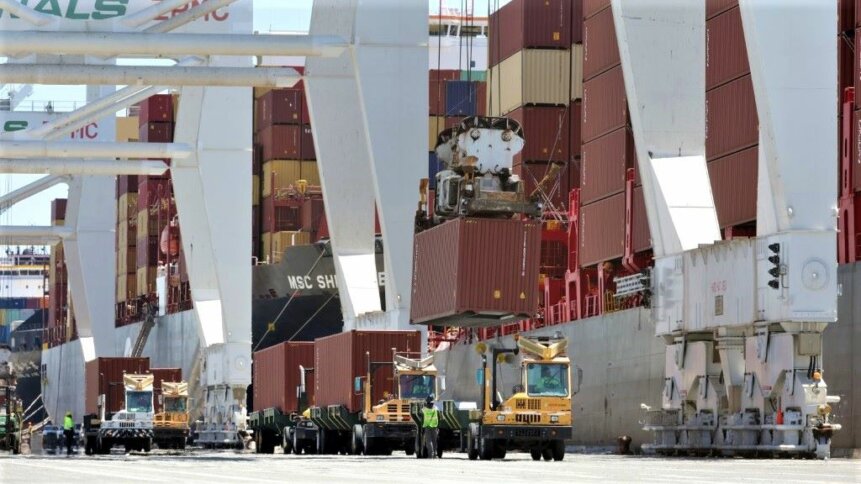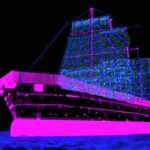Supply chain planning – the importance of terminal operating systems

|
Getting your Trinity Audio player ready...
|
Operating systems have a huge bearing on our relationship with technology and appeal to personal preferences – for example, try getting Linux, Mac, and MS Windows users to swap machines! And one of the most significant operating systems in our daily lives is a platform type that many of us never consider – the terminal operating system, which is critical to transporting goods efficiently around the world.
Experience goes a long way when it comes to implementing a terminal operating system that’s going to achieve its full potential. And, as customers soon discover, one size doesn’t fit all. The selection process begins with the nature of the shipping terminal as break bulk – goods such as steel, lumber, and agricultural products, which are not shipped in containers – processes deviate from general cargo operations.
David Trueman, MD of TBA Group, points out that container processing involves standard dimensions – so much so that operations can run efficiently with little knowledge of what’s inside. Container terminals also benefit from a standardized format of electronic data interchange (EDI) and suit optical character recognition – with agreement on the type and position of container numbers.
However, break bulk cargo comes in various shapes and sizes. Plus, it’s vital to know the nature of the goods to manage unloading, warehousing, and transport. And cargo identification markings are more varied, both in design and location.
“It’s really important to understand where the data sources are going to be,” Trueman responds, when asked about the single most important thing to consider in the design of a bulk handling terminal operating system. “Where are you going to get your real-time information? The location of weighbridges in the operational workflow is vital.”
What is a terminal operating system?
One way of picturing terminal operating systems is to think of them as an enterprise resource planning solution (ERP) for port operators. The systems are essential for optimizing labor allocation and equipment usage and managing the way that port areas are utilized. And Thetius, a maritime technology analyst firm, estimates that the terminal operating system market is currently worth over half a billion dollars.
Day 20 of the #30DayMapChallenge – My Favourite. I think it is the prettiest visualisation I have and indeed, will ever make!😍
Made with #Python using #matplotlib and #Numpy. #DataScience #DataVisualization #Map #shipping #Geography #dataviz #data #DataScientist pic.twitter.com/8iZiCfib62— Python Maps (@PythonMaps) November 20, 2022
Features offered by vendors include fleet management, autogate systems, and video analytics. Terminal operating systems can build off industrial IoT frameworks to gather even more data on real-time operations – which expands the possibilities for machine learning and AI. And modules can service billing and other related activities to streamline business operations.
Also, given that vessel plans involve multiple parties, including the next port of call, collaboration is key. And terminal operating systems can help to manage that complex process, carry out better planning, and compile all of the necessary information into the right format, noting EDI requirements.
List of TOS vendors
- Contpark
- CyberLogitec (OPUS Terminal)
- DP World (CARGOES)
- Envision
- GullsEye
- Hogia
- Inform
- iPortman
- IT Partner
- Kaleris (Navis)
- MarineBerth
- Orbita TMEIC
- TBA Group
- TGI
- Tideworks (Mainsail)
Clearly, the world is becoming more automated. And port terminals are no exception from discharging and loading machinery handling vessels at the berth area to yard operations and gate management.
It’s commonplace – for example, in giant terminals such as the Port of Long Beach in the US (the country’s first fully automated port) or the Port of Rotterdam (Europe’s largest seaport) – to see self-driving container trucks (terminal tractors) shuttling back and forth. And reports suggest that smart ports brimming with IoT sensors could accommodate autonomous ships by 2030.
China too has been busy automating its port facilities, including Qingdao – a major seaport in the east of the country and one of the top 10 in the world based on traffic. Qingdao harbor has four zones, which handle cargo and container goods, including oil and petrol tankers, as well as vessels carrying iron ore.
Logical upgrade to supply chain planning
The scale of traffic, diversity of goods, and multiple modes of transport, including road and rail freight, highlight the demands that terminal operating systems have to meet. And getting to grips with this complexity helps to explain why ports are becoming a magnet for the latest technology.
On TechHQ we’ve written about how quantum computers are being used to plan the loading of trucks to reduce the distance traveled by RTG cranes and dramatically reduce maintenance and operating costs.
Private 5G networks are also helping to boost the efficiency of shipping terminals where mobile coverage may otherwise be patchy and feature dead spots. And there are gains beyond connectivity, as operators benefit from being fully in control of communications.
Having a terminal operating system to measure and record port activity gives management a dashboard view on whether operations are achieving their key performance indicators (KPIs). And, particularly if KPIs are not being met, analysts can dive in – aided by data insights – and identify where the bottlenecks are.
Systems also provide a suite of reporting tools – for example, showing terminal inventory, gate movements, vessel movements, crane productivity, truck turnaround time, and much more.
The scale of modern freight shipping is mind-blowing. If you put all of the containers from a large category vessel onto a freight train – that freight train would be over 70 miles long.
And, typically, all of that cargo will be unloaded and replaced with waiting goods in less than 48 hours, which is a tribute to numerous advances, including developments in terminal operating systems.









